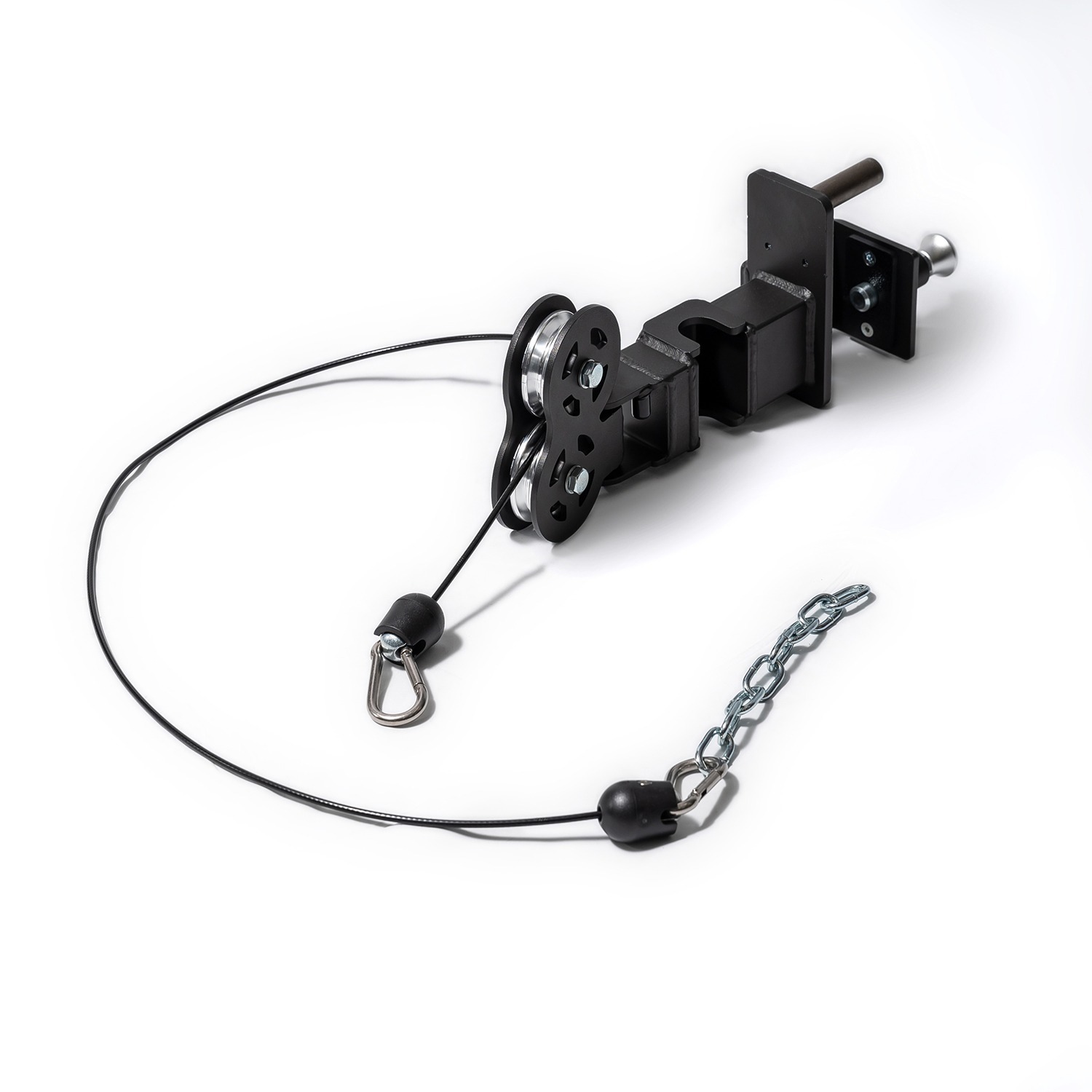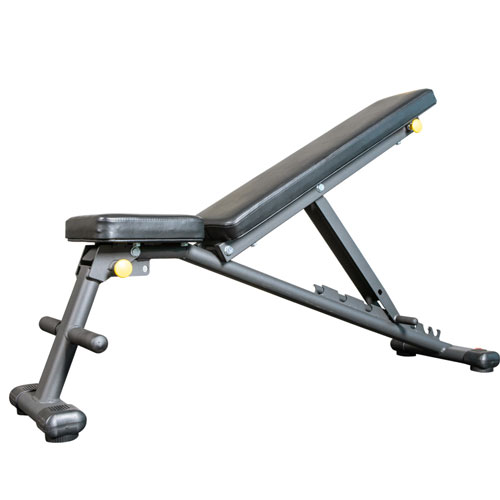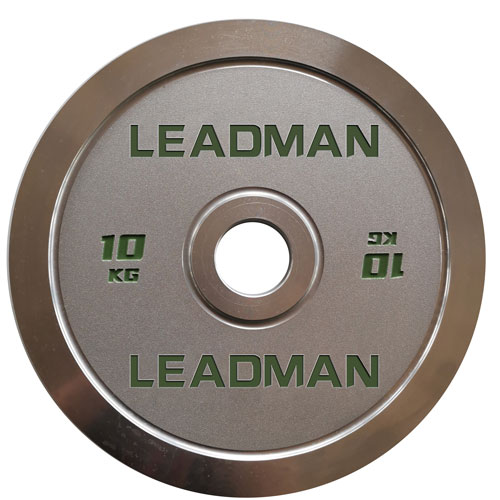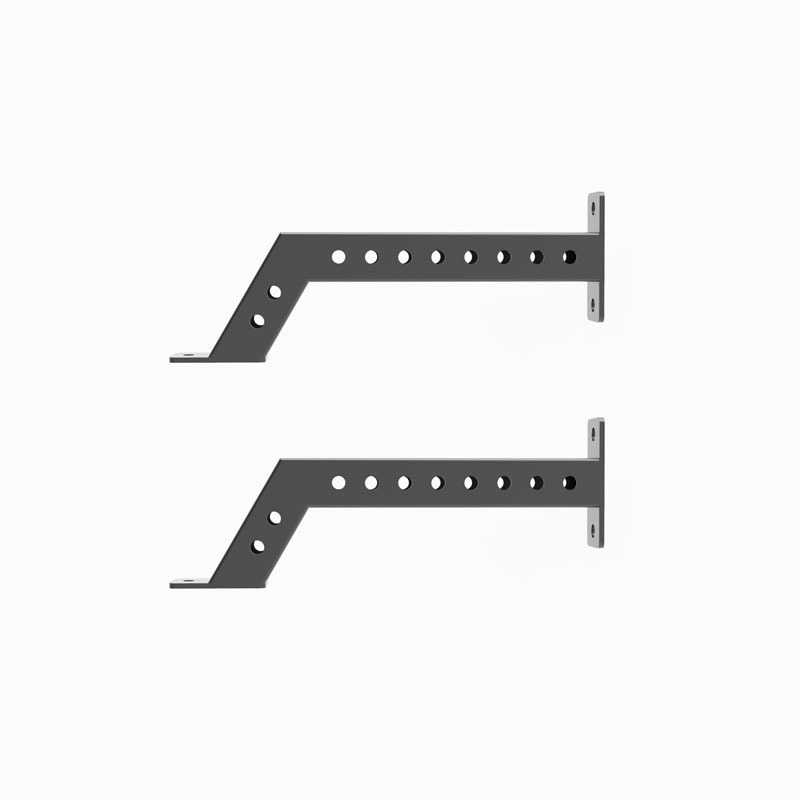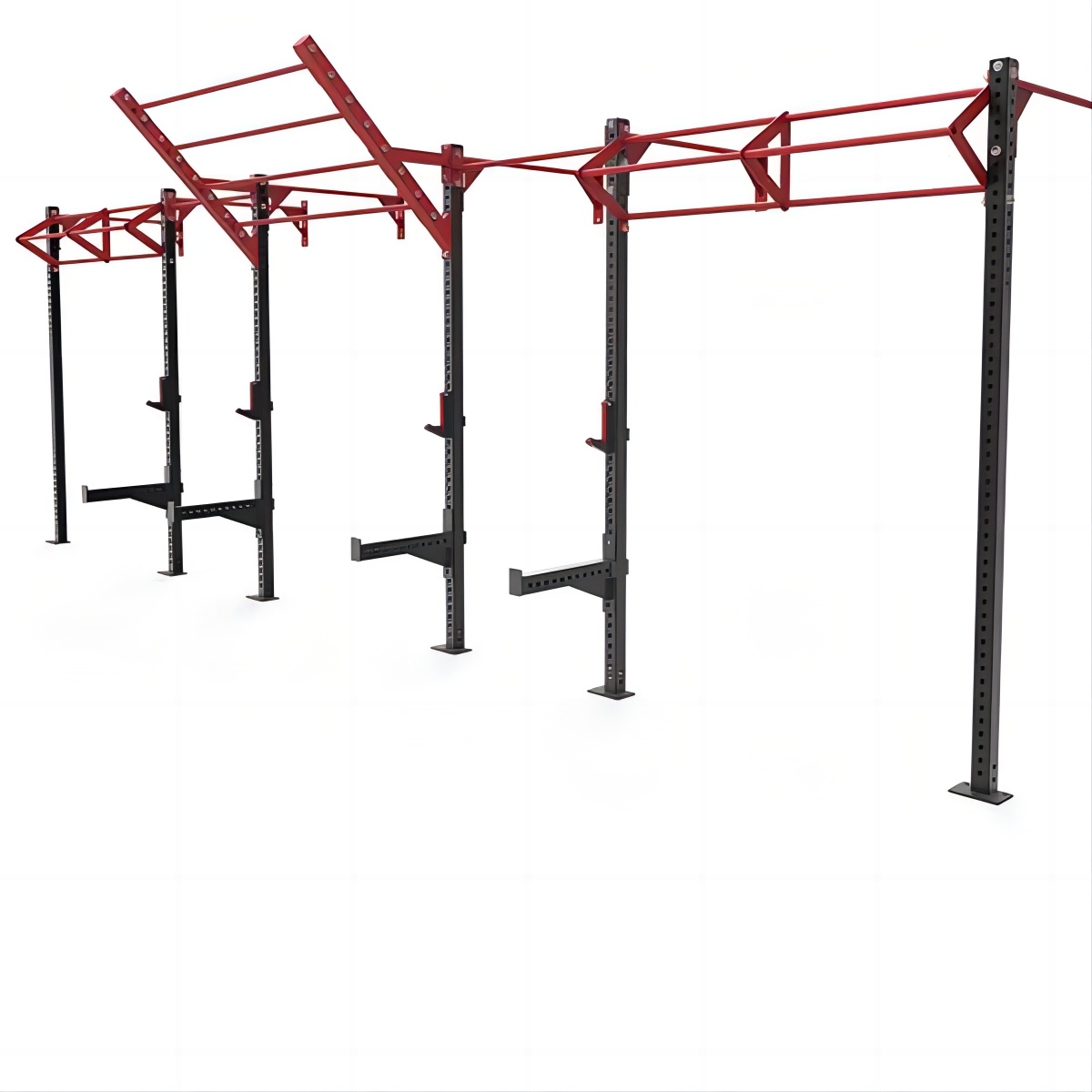Choosing the Right Bumper Plates for Your Fitness Facility
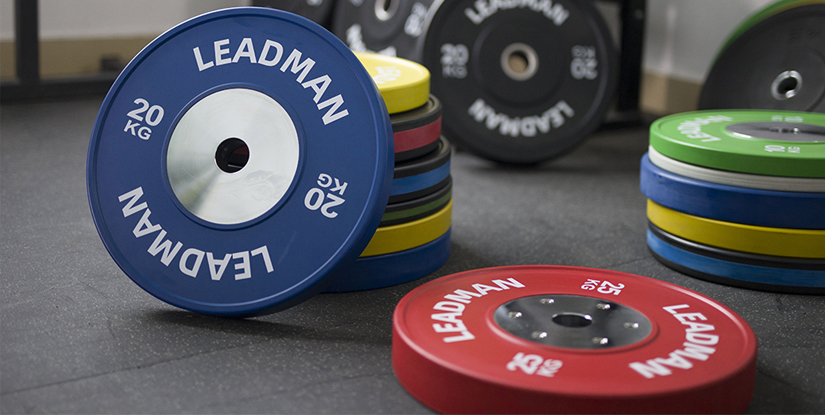
Introduction
Welcome to Leadman Fitness's comprehensive guide on choosing the right bumper plates for your fitness facility. As a seasoned manufacturer of high-quality fitness equipment, we understand the importance of selecting the appropriate gear to maximize performance, ensure safety, and enhance the overall experience for your members. In this extensive article, we'll explore everything you need to know to make an informed decision, optimizing your investment and supporting the long-term success of your facility.
Bumper plates are an essential component of any well-equipped gym, especially those focused on Olympic weightlifting, and functional fitness. They are designed to withstand repeated drops, protecting both the flooring and the equipment, while also minimizing noise and vibration. However, with a plethora of options available in the market, choosing the right bumper plates can be overwhelming. Factors such as material, weight accuracy, durability, and price all play crucial roles in your decision-making process.
At Leadman Fitness, we pride ourselves on providing top-tier bumper plates that meet the diverse needs of fitness facilities worldwide. Our products are crafted with precision, using high-quality materials and advanced manufacturing techniques to ensure exceptional performance and longevity. We aim to equip you with the knowledge necessary to select bumper plates that not only meet but exceed your expectations.
Ready to dive in? Let's explore the key aspects of choosing bumper plates, from understanding your facility's needs to evaluating the various types and features available.
Understanding Your Fitness Facility's Needs
Before delving into the technical specifications and types of bumper plates, it's essential to assess your facility's specific requirements. This involves considering factors such as the type of training conducted, the volume of use, and the budget available.
1. Training Style
The type of training prevalent in your facility will significantly influence the type of bumper plates you should choose. Facilities focusing on Olympic weightlifting will require bumper plates that adhere to strict IWF (International Weightlifting Federation) standards. These plates are designed for high-impact drops and must meet specific dimensions and weight tolerances.
For functional fitness gyms, versatility and durability are paramount. Bumper plates used in these settings need to withstand a variety of exercises, including ground-to-overhead movements and repeated drops. The plates should also be suitable for both beginner and advanced athletes.
If your facility caters primarily to general fitness enthusiasts, a more moderate option may suffice. These bumper plates should still offer durability and safety, but they may not need to meet the stringent standards required for competitive weightlifting.
2. Usage Volume
Consider the number of members using the bumper plates daily. High-traffic facilities will require more durable and resilient bumper plates that can withstand constant use and frequent drops. Investing in higher-quality plates will reduce the need for frequent replacements, saving you money in the long run.
For smaller, boutique gyms or personal training studios with lower usage volumes, a more economical option may be suitable. However, it's still essential to prioritize quality to ensure safety and longevity.
3. Budget Constraints
Budget is always a crucial consideration when purchasing fitness equipment. However, it's essential to view bumper plates as an investment rather than a mere expense. Cheaper bumper plates may seem appealing initially, but they often lack the durability and performance of higher-quality options.
At Leadman Fitness, we offer a range of bumper plates to suit various budgets without compromising on quality. We can work with you to find the best solution that meets your financial constraints while providing the performance and durability your facility requires.
Types of Bumper Plates
Bumper plates come in various types, each designed for specific purposes and training styles. Understanding the differences between these types is crucial in making the right choice for your facility.
1. Competition Bumper Plates
Competition bumper plates are designed for Olympic weightlifting and adhere to strict IWF standards. These plates are typically made from high-density rubber and feature a steel insert that ensures a snug fit on the barbell. They are precisely calibrated to meet specific weight tolerances, making them ideal for competitive environments.
Key features of competition bumper plates include:
- Precise weight calibration (+/- 10 grams)
- High-density rubber construction
- Steel insert for a secure fit
- Standardized color-coding for easy weight identification
2. Training Bumper Plates
Training bumper plates are designed for general use in commercial gyms and fitness facilities. While they may not meet the stringent standards of competition plates, they still offer excellent durability and performance. These plates are typically made from a less dense rubber, making them more affordable while still providing adequate protection for flooring and equipment.
Key features of training bumper plates include:
- Durable rubber construction
- Steel insert for a secure fit
- Slightly wider weight tolerance (+/- 1%)
- Color-coded or black options available
3. Crumb Bumper Plates
Crumb bumper plates, also known as recycled rubber bumper plates, are made from recycled rubber crumbs. These plates are an environmentally friendly option and offer excellent durability and shock absorption. They are ideal functional fitness gyms where versatility and sustainability are valued.
Key features of crumb bumper plates include:
- Made from recycled rubber crumbs
- Excellent durability and shock absorption
- Environmentally friendly
- Black with colored flecks for weight identification
4. Technique Plates
Technique plates are lighter than standard bumper plates and are designed for beginners or those working on their lifting technique. These plates are typically thinner and have a smaller diameter, making them easier to handle and control.
Key features of technique plates include:
- Lighter weight for beginners
- Thinner and smaller diameter
- Durable rubber construction
- Ideal for learning proper lifting form
Key Factors to Consider When Choosing Bumper Plates
When selecting bumper plates for your fitness facility, several key factors should be taken into consideration to ensure you're making the right choice.
1. Material
The material used in the construction of bumper plates is crucial for their durability and performance. High-density rubber is the most common material for competition and training bumper plates, offering excellent shock absorption and longevity. Crumb rubber is a sustainable alternative, while technique plates often use a softer rubber compound for easier handling.
2. Weight Accuracy
Weight accuracy is particularly important for competition bumper plates, where even a small discrepancy can affect performance. Ensure that the bumper plates you choose meet the required weight tolerances for your specific training environment.
3. Durability
Durability is essential, especially for high-traffic facilities. Look for bumper plates with robust construction, high-quality materials, and reinforced steel inserts to ensure they can withstand repeated drops and constant use.
4. Noise Level
Bumper plates can generate significant noise when dropped, which can be disruptive in some environments. Consider the noise level of different bumper plate types and choose those that offer noise reduction features, such as high-density rubber or crumb rubber construction.
5. Brand Reputation
Choose bumper plates from reputable manufacturers with a proven track record of quality and performance. Reading reviews and seeking recommendations from other gym owners can provide valuable insights into the reliability of different brands.
Optimizing Bumper Plate Inventory for Fitness Facilities
Optimizing your bumper plate inventory is crucial for ensuring a smooth and efficient operation in your fitness facility. Strategic inventory management can help minimize costs, reduce storage needs, and ensure that members always have the equipment they need.
1. Assessing Inventory Needs
Begin by assessing your facility's specific needs based on membership size, training programs, and peak usage times. Understanding the demand for different weight ranges will allow you to allocate resources efficiently and prevent shortages.
2. Implementing Inventory Management Systems
Consider implementing an inventory management system to track bumper plate usage, monitor stock levels, and forecast future demand. This can be as simple as a spreadsheet or a more sophisticated software solution tailored to the fitness industry.
3. Regular Audits and Maintenance
Conduct regular audits of your bumper plate inventory to identify any missing or damaged plates. Implement a maintenance program to clean and inspect the plates, ensuring they are in good condition and safe for use.
4. Efficient Storage Solutions
Optimize storage space by using vertical storage racks or wall-mounted solutions. This will not only save space but also make it easier for members to access the bumper plates they need.
5. Strategic Purchasing Practices
Develop strategic purchasing practices to take advantage of bulk discounts and seasonal sales. Partnering with a reliable supplier like Leadman Fitness can ensure you receive high-quality bumper plates at competitive prices.
Customizing Bumper Plates for Your Brand Identity
Customizing bumper plates with your brand logo and colors is a fantastic way to enhance your fitness facility's identity and create a cohesive brand experience. Customized bumper plates can reinforce your brand message, increase member loyalty, and set your facility apart from the competition.
1. Benefits of Customization
Customizing bumper plates offers several benefits:
- Enhanced brand visibility
- Increased member loyalty
- Improved facility aesthetics
- Differentiation from competitors
2. Customization Options
Leadman Fitness offers a range of customization options for bumper plates, including:
- Logo printing
- Color matching
- Custom weight markings
- Unique designs
3. Design Considerations
When designing your customized bumper plates, consider the following:
- Placement of logo and weight markings
- Color scheme that aligns with your brand
- Font style for weight markings
- Overall aesthetic appeal
4. Partnering with Leadman Fitness
Leadman Fitness has extensive experience in manufacturing customized bumper plates for fitness facilities worldwide. Our team can work with you to create a design that perfectly reflects your brand identity and meets your specific requirements.
The Benefits of Using Bumper Plates in Commercial Gyms
Incorporating bumper plates into your commercial gym offers numerous advantages, enhancing the overall training environment and improving member satisfaction.
1. Enhanced Safety
Bumper plates are designed to absorb impact and reduce the risk of injuries. This is particularly important in weightlifting exercises where dropping the barbell is common. The shock-absorbing properties of bumper plates minimize stress on joints and reduce the likelihood of strains or sprains.
2. Reduced Noise and Vibration
The use of bumper plates significantly reduces noise and vibration compared to traditional iron plates. This creates a more pleasant and less disruptive training environment for members.
3. Protection for Flooring and Equipment
Bumper plates protect your gym flooring and equipment from damage. The rubber construction absorbs impact, preventing cracks, dents, and other forms of damage that can result from dropping heavy weights.
4. Versatility
Bumper plates are suitable for a wide range of exercises, including Olympic weightlifting, powerlifting, and functional fitness. This versatility makes them an essential component of any well-equipped commercial gym.
5. Improved Member Experience
By providing high-quality bumper plates, you demonstrate a commitment to member safety and satisfaction. This can enhance your gym's reputation and attract new members.
FAQ About Choosing Bumper Plates
1. What is the difference between competition and training bumper plates?
Competition bumper plates adhere to strict IWF standards, featuring precise weight calibration and high-density rubber construction. Training bumper plates are designed for general use in commercial gyms and offer excellent durability at a more affordable price.
2. How do I maintain bumper plates to maximize their lifespan?
Regularly clean bumper plates with a mild detergent and water to remove dirt and grime. Inspect the plates for any signs of damage and replace them if necessary. Store bumper plates properly on storage racks to prevent warping or damage.
3. Are crumb bumper plates a good option for my gym?
Crumb bumper plates are an excellent option functional fitness gyms where versatility and sustainability are valued. They offer excellent durability, shock absorption, and are made from recycled materials.
4. Can I customize bumper plates with my gym's logo?
Yes, Leadman Fitness offers customization options for bumper plates, including logo printing, color matching, and custom weight markings. Contact our team to discuss your specific requirements.
Conclusion
Choosing the right bumper plates for your fitness facility is a critical decision that can impact the safety, performance, and overall experience of your members. By understanding your facility's needs, evaluating the different types of bumper plates available, and considering key factors such as material, weight accuracy, and durability, you can make an informed choice that supports the long-term success of your business.
At Leadman Fitness, we are committed to providing high-quality bumper plates that meet the diverse needs of fitness facilities worldwide. Our experienced team can assist you in selecting the right bumper plates for your facility and offer customization options to enhance your brand identity. Contact us today to learn more about our products and services.

